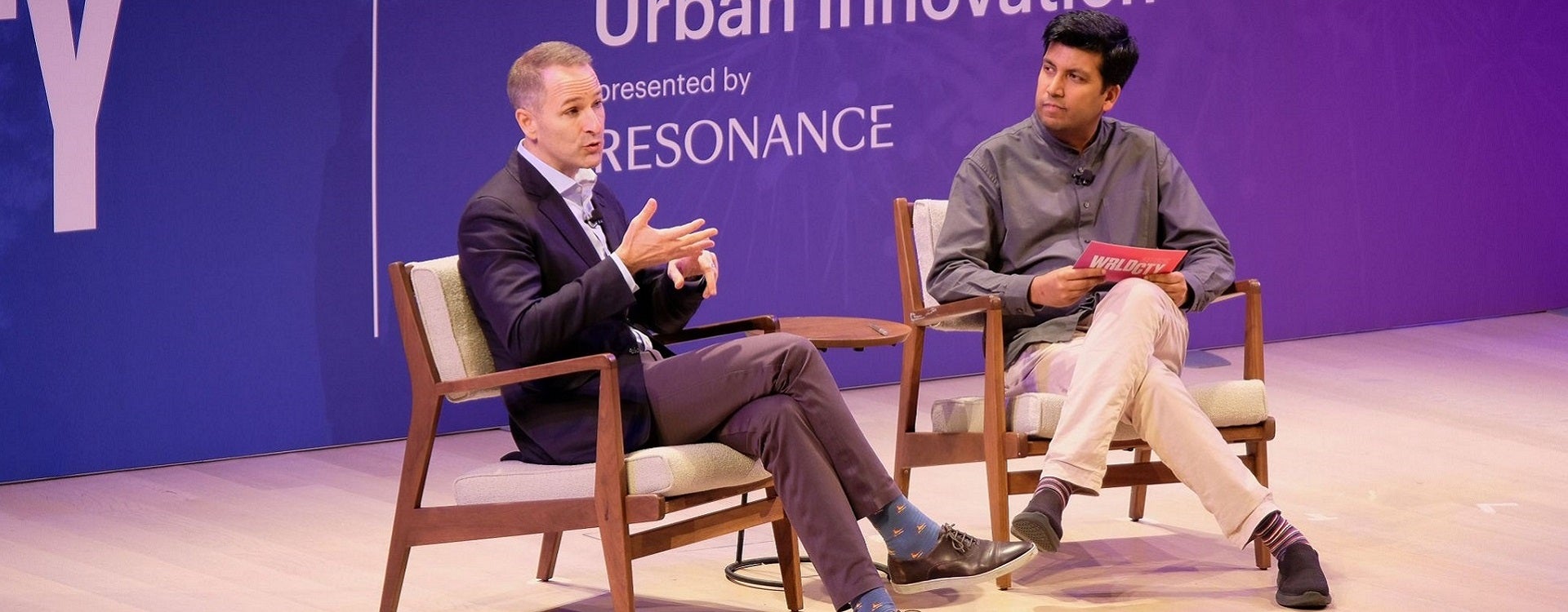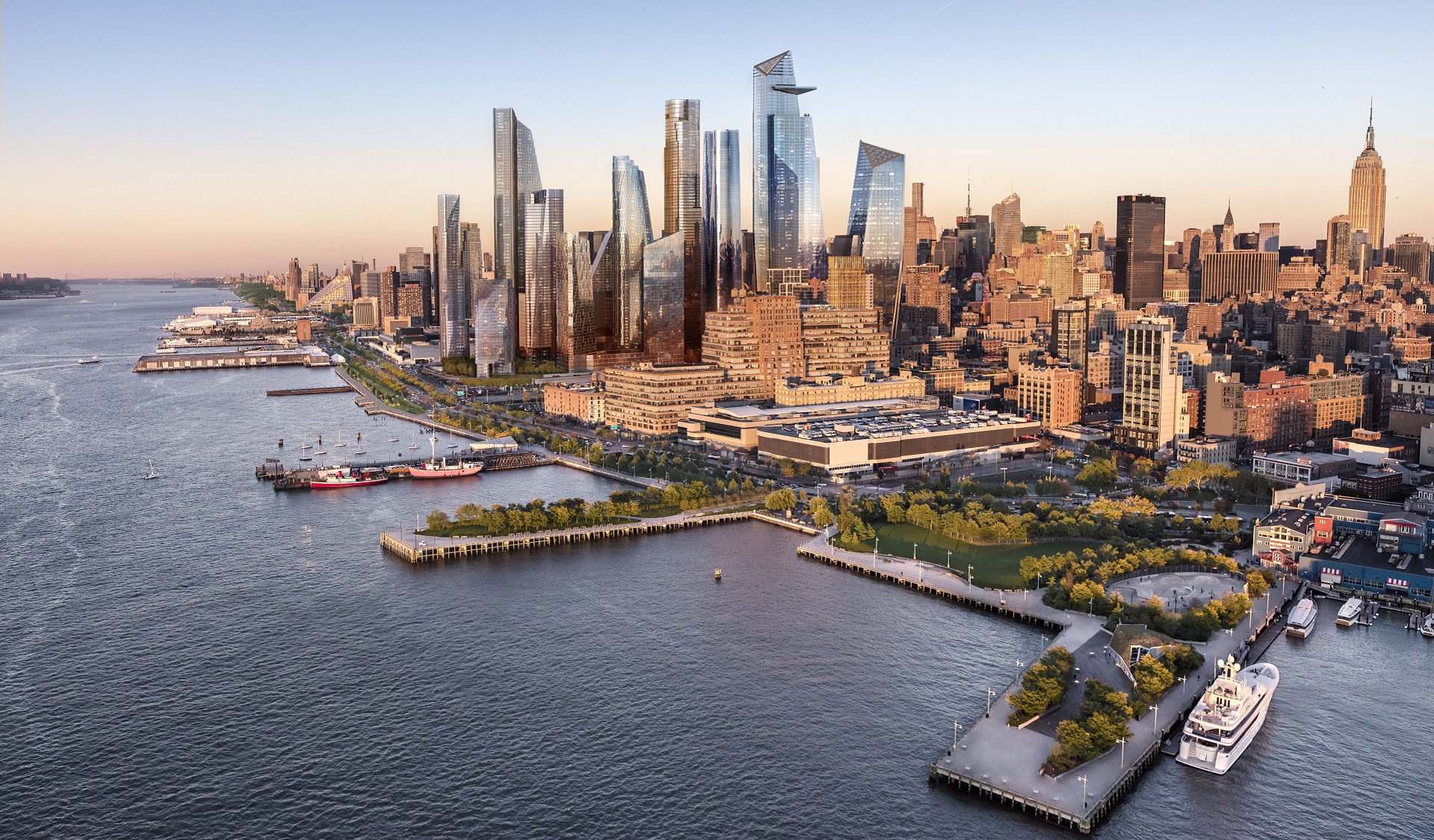This October, the third annual edition of WRLDCTY—the global forum for urban innovation—took place in New York City. Connecting more than 10,000 leading urban innovators and city makers both in-person and online, the conference is focused on sharing the best ideas about the future of cities from the world’s leading practitioners in urban design, real estate and technology.
From a diverse array of speakers from all around the world, several consistent themes emerged. To break those down, here’s five key takeaways from WRLDCTY 2022.
1. Rise of the ‘central social district’
Centring businesses and wealth creation, CBDs (or downtowns) have traditionally focused on providing places to live, work and shop—large employment and shopping clusters. But with office occupancy and associated foot traffic facing a pandemic-induced new normal, embracing the concept of central social districts (CSDs)—places to live, work, shop and play—will be key to attracting and keeping people downtown.
Successful CSDs will meet the individual’s social needs: our needs for fun, green space and socialization. Components include places such as arenas, libraries, restaurants, parks, public spaces and art venues. These spaces make 24/7 activation of our downtowns possible. They’re able to generate significant customer traffic which retailers are dependent on. And visitation data for these areas is easy to obtain and understand, which enables smarter design and programming.
2. Unhealthy spaces have a real cost
Strong ESG practices and principles continue to create economic value. WRLDCTY panellist Arsha Cazazian-Clement, Director of Global Real Estate at Sherman & Sterling and Associate Fellow at the Saïd Business School, Oxford, cited research that demonstrated that companies that prioritize employee health and wellness outperform the S&P 500 by 2% a year on average.
The provision of healthy workplaces directly factors into this focus on employee health and wellness. In a study by Harvard’s T.H. Chan School of Public Health, employees’ cognitive function scores were 61% higher when working in a “green” office building with high internal air quality compared to when the same employees worked in a conventional office building.

Oxford President Michael Turner at WRLDCTY
3. Cities have not kept up with demand for purpose-built rental
There was uniform agreement across speakers that a lack of a housing choice and affordability was one of the most pressing issues facing cities. This was echoed by Oxford’s President, Michael Turner, who stated this problem is playing out across virtually all major cities in which Oxford operates globally, with the rental sector being acutely impacted.
Rental homes play a critical role in creating vibrant and diverse cities and communities, whether it’s a first place outside of the family home for a young person or homes for new arrivals to a city.
Turner described how a confluence of population growth, the rising unaffordability of homeownership, an increasingly mobile workforce and demographic shifts in attitudes towards renting has seen demand greatly outstrip supply. He saw Oxford’s contribution, and that of private capital, in solving the problem as helping to boost supply through the development of new product. He cautioned that it would need collaboration between cities and developers to ensure projects get out of the ground.
Turner urged participants to move beyond the stereotype that renters, “only want to, or must, live in an apartment building.” An increasing number of families want the ability to rent a single-family home with a yard and that this housing and lifestyle choice was largely currently confined to homeowners. He saw an increasing need for private capital to service this demand to provide families security of tenure and professional managed homes through institutionally owned single family rental.
4. Emotion as a function
From the great pyramids in Egypt, to the famed streets of Paris, we all love soulful and unique place design. Yet, the dominating ‘form follows function’ ethos of our time has seen modern downtowns prioritize efficiency, a building’s ability to maximize its core function, over quality and aesthetics. Thus, the question was asked, “is emotion—the beauty and timelessness of a building—not also a function?”
According to acclaimed British designer, Thomas Heatherwick, the answer was a resounding yes. Arguing the merits of emotion as a function, Heatherwick pointed to real estate’s sustainability imperative as to why creating buildings that last through timeless design isn’t simply a subjective matter of taste.
With real estate responsible for nearly 40% of global CO2 emissions, and the average lifespan of a commercial building in the UK at 40 years, increasing the useful life of assets is crucial for long-term sustainability.
5. Successful corporate urbanism is intentional
With the paradigm shifting effects of the pandemic, organizations are increasingly leveraging their spaces in new ways to attract customers, enhance employee wellness and promote themselves within their communities. But blurring the lines between brand and community is a delicate balancing act.
Successful corporate urbanism is intentional, long-term and creates value for the community, which Jorick Beijer of Blossity explored in his session on brand activations. Part of Oxford’s €200 million revamp of Berlin's iconic Sony Center, Beijer discussed our long-term partnership with Nike to deliver the Nike Experience Hub.
Combating physical inactivity induced by the pandemic, Oxford reimagined part of the Sony Center’s streetscape for work and play through an outdoor fitness area. The hub offers a range of fitness classes led by Nike coaches, free of charge to Sony Center occupants and the public.

Nike Experience Hub @ the Oxford-owned Sony Center in Berlin
